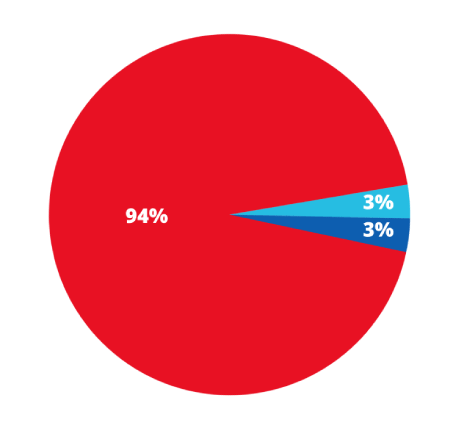Summary
- Many people are unaware that there’s a hunger crisis affecting nearly one-tenth of the world’s population.
- Read on to learn some of the startling facts about global hunger, including its effects on millions of children each year.
- Then, find out how you can support Embrace Relief’s efforts to feed as many people in need as possible through our International Hunger Relief campaigns.

Looking at today’s world hunger facts makes it clear how much of a major issue global food insecurity really is. There are many causes of world hunger, including a lack of resources, extreme inequality of income distribution in the world, and conflict within and between countries. Below are just a few of the incredibly disconcerting facts regarding food insecurity in the world today.
Worldwide Food Shortage Facts
The world produces enough food to feed everyone on the planet, yet nearly 10% of the world’s population is undernourished in 2023, according to the World Bank.
Undernourishment is defined as a state of inability to acquire enough food for at least one year. Enough food is defined as a level of food intake insufficient to meet dietary energy requirements. On average, 2,100 is a healthy amount of calories to consume per day. However, most people who are chronically hungry eat even less than 1,800. And, unfortunately, the UN World Food Programme’s live Hunger Map aggregates 700 million people worldwide who do not have enough to eat on a regular basis. Hunger can be found in every country on the planet, but developing countries and countries with high levels of poverty are most at risk.
- 700 million+ people are living in extreme poverty. Out of the eight billion people on the planet, nearly one in 10 live in extreme poverty, defined as living on $2.15 per person per day. Extreme poverty does more than deprive people of necessary food—it also robs them of safe drinking water, sanitation, education, shelter, and other basics of life. And while the number of people living in extreme poverty is declining each year, there are still many more vulnerable people – nearly half the world’s population (47 percent) lives on $6.85 per person or less per day.
- Small farmers, herders, and fishermen produce about 70 percent of the global food supply, yet they are especially vulnerable to food insecurity. Poverty and hunger are most acute among rural populations.
- Conflict is a cause and consequence of hunger. Conflict is responsible for eight of the 10 world’s worst food crises, and nearly 60 percent of the world’s hungriest people live in conflict zones.
- Undernourishment causes 45% of all children’s deaths. Each year, 3.1 million children die from hunger-related causes, which include diarrhea and malnutrition. Every 10 seconds a child dies from hunger. More than 99 million children under age 5 are undernourished and underweight. As a result of hunger, children experience poor health, low energy levels, and reductions in mental functioning due to hunger.
- Rising global food prices will cause 1.27 million more children to be undernourished in the near future, making them one of the chief factors contributing to the rise in world hunger. These rising prices are a result of the increase in demand for food by the continually growing population and underinvestment of agriculture. Unfortunately, this demand takes away the only food source for those in need, contributing to food shortages around the world and, therefore, rampant famine in the world.
- One-tenth (1/10) of the population of Asia is undernourished, accounting for roughly half of the world’s population of hungry people. Much of this hunger if centered in India, where approximately one in six people (1/6) live with hunger.

The Solution to World Hunger and the Cost to Solve World Hunger
All of these facts beg a series of highly important questions:
- How do we end world hunger?
- What is the cost to end world hunger?
- What are some solutions to world hunger?
Unfortunately, however, the problem is far too complex — and stems from far too many factors — to offer a simple, all-encompassing answer. While the international community continues to work on solutions to this pressing issue, we can work together to alleviate suffering from the effects of world hunger in the short term. This is a role that Embrace Relief has played since 2013.

How We Limit Global Starvation: Our World Hunger Solutions and Facts
Mankind may never be able to fully solve world hunger, but since 2013 Embrace Relief has done its part to limit food shortages in the world. Our annual International Hunger Relief campaigns have reached hundreds of thousands of people, and many more have received food packages, hot meals, and meat packages at food distribution events. More than 5.5 million people in over 40 countries have benefitted from Embrace Relief’s Hunger Relief campaigns.
But we can’t do any of this without the help of generous people like you. Please consider donating to Embrace Relief today, via the donation box below, to contribute to our global efforts to end world hunger and help vulnerable people who are constantly struggling to find their next meal. Not only are you providing them the gift of nutrition, you’re giving them hope for a healthier, happier future as well. Together, let’s do everything we possibly can to stop world hunger!























